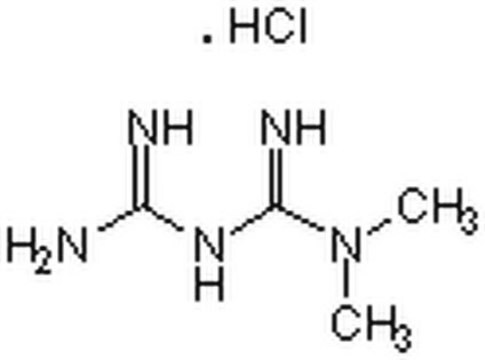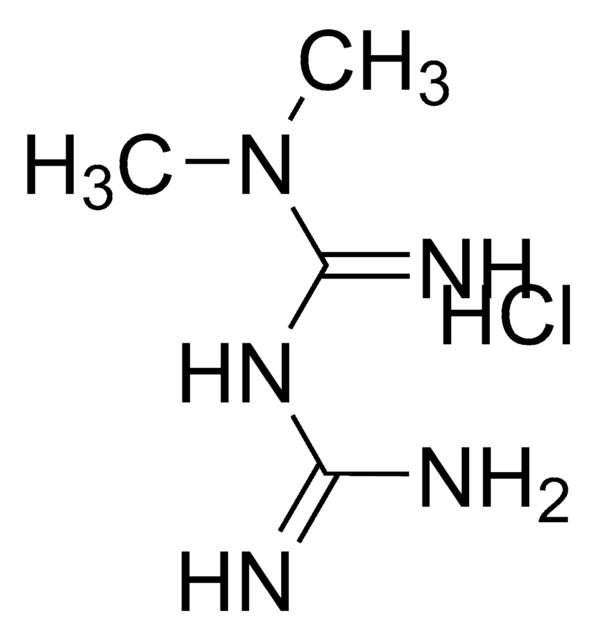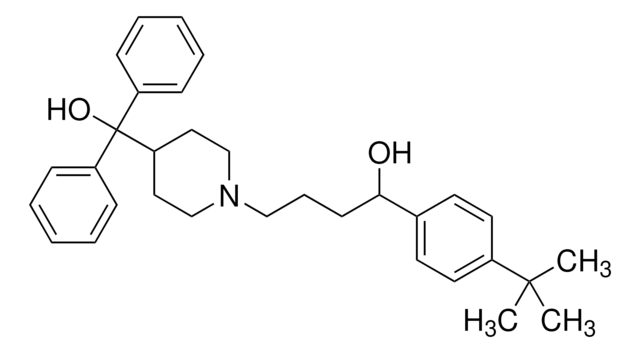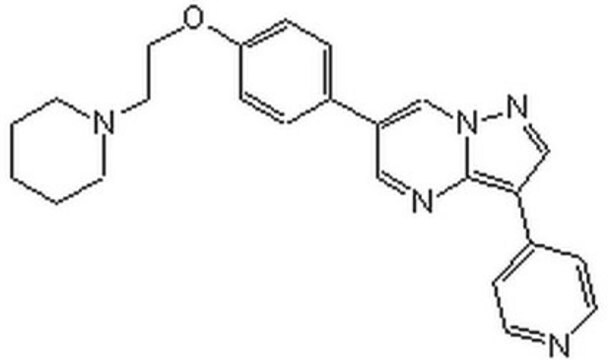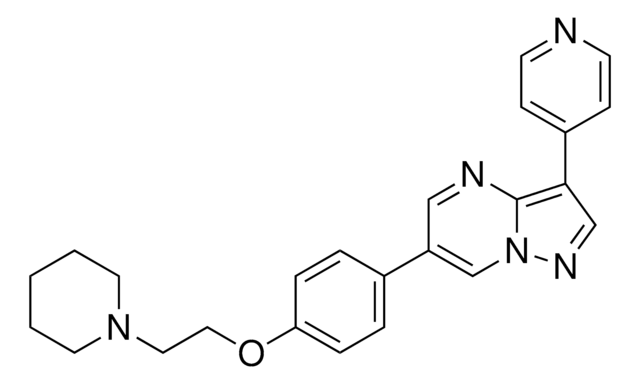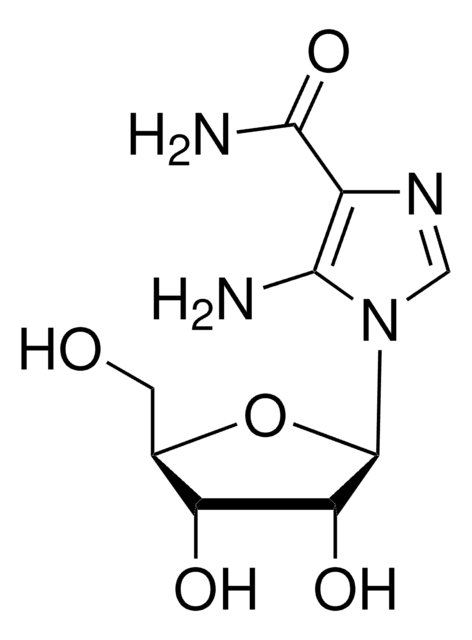D150959
1,1-Dimethylbiguanide hydrochloride
97%
Synonym(s):
Metformin
About This Item
Recommended Products
Assay
97%
form
crystals
mp
223-226 °C (lit.)
SMILES string
Cl[H].CN(C)C(=N)NC(N)=N
InChI
1S/C4H11N5.ClH/c1-9(2)4(7)8-3(5)6;/h1-2H3,(H5,5,6,7,8);1H
InChI key
OETHQSJEHLVLGH-UHFFFAOYSA-N
Gene Information
Looking for similar products? Visit Product Comparison Guide
General description
Metformin is used as an organic base catalyst for the transesterification of coconut oil with methanol.
Application
- bis(1,1-dimethylbiguanido)copper(II) octahydrate
- bis(1,1-dimethylbiguanido)nickel(II)
- 1,1-dimethylbiguanidium tetrabromothallate(III)
Biochem/physiol Actions
Signal Word
Warning
Hazard Statements
Precautionary Statements
Hazard Classifications
Acute Tox. 4 Oral - Eye Irrit. 2
Storage Class Code
11 - Combustible Solids
WGK
WGK 1
Flash Point(F)
Not applicable
Flash Point(C)
Not applicable
Personal Protective Equipment
Choose from one of the most recent versions:
Already Own This Product?
Find documentation for the products that you have recently purchased in the Document Library.
Customers Also Viewed
Articles
Sigma-Aldrich presents an article about how proliferating cells require the biosynthesis of structural components for biomass production and for genomic replication.
Our team of scientists has experience in all areas of research including Life Science, Material Science, Chemical Synthesis, Chromatography, Analytical and many others.
Contact Technical Service
